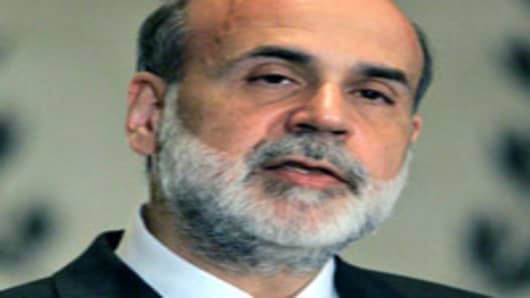Late Tuesday, the futures were pricing in a 90% chance of a half-point cut and a 60% chance of a three-quarter point cut next week.
The Fed cuts overnight rates by three-quarters of a point early Tuesday in a surprise, inter-meeting move, after U.S. recession fears sparked a global sell-off in equity markets.
Stocks fell again Wednesday, helping draw money to the bond market. The yield on the 10-year Treasury note was down 16.1 basis points to 3.321%, the lowest yield seen since June 2003.
The Fed's emergency rate cut drew a mixed response on Wall Street. Some analysts said it was a timely and much-needed effort to shore-up deteriorating confidence in global markets. Others said it signaled a sense of desperation.
"Plainly the Fed realized that to try to stay ahead of the market they had to act immediately. That is the positive reading of the action," said Alan Ruskin, chief international strategist at RBS Greenwich Capital in Greenwich, Connecticut. "The negative viewpoint is that it smacks of panic."
"The Fed is very, very, very worried," said John Tierney, an analyst at Deutsche Bank in New York.
The rate cut was the first in between regularly scheduled Fed meetings since Sept. 17, 2001, the first day U.S. financial markets reopened after the Sept. 11 terror attacks.
The last time the Fed took actions that reduced the federal funds rate by at least three-quarters of a point was in October 1984. However, it only began to set an explicit federal funds rate target as its primary lever to influence the economy around 1990.
Prior to that, it had used the discount rate to signal its policy stance. It had cut the discount rate by a full point in December 1991.
"The committee took this action in view of a weakening of the economic outlook and increasing downside risks to growth," the Fed said, referring to its policy-setting Federal Open Market Committee.
"While strains in short-term funding markets have eased somewhat, broader financial market conditions have continued to deteriorate and credit has tightened further for some businesses and households," it said.


